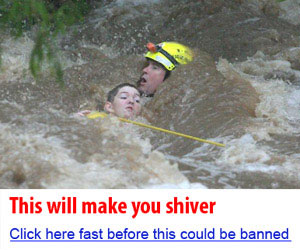Ocean fishing 101 – Unveiling the Secrets of the Sea
Plunge into the mysterious depths of the ocean and emerge with a newfound mastery of fishing. This is no ordinary fishing guide, but a comprehensive journey that will transform you from an amateur angler into a seasoned sea fisherman.
Venture into the world of ocean fishing, where every wave holds a new adventure. We will explore the art of selecting the right gear, the science behind understanding marine species, and the skill of mastering different fishing techniques.
With Ocean Fishing 101, the sea’s secrets will no longer be mysteries. Dive in, and let the ocean’s rhythm guide you towards becoming a skilled angler. This is just the beginning of an exciting journey – your journey. Welcome aboard!
What Is Ocean Fishing?
Ocean fishing, also known as sea fishing or offshore fishing, refers to the practice of catching fish in the open ocean. Unlike freshwater fishing, ocean fishing allows anglers to catch a diverse range of marine species, some of which can be quite large and challenging to reel in.
One of the most exciting aspects of ocean fishing is the variety of techniques used. These include trolling, bottom fishing, and fly fishing. Trolling involves dragging baited lines behind a moving boat to attract predatory fish. Bottom fishing targets species that dwell near the ocean floor, using weighted lines and baited hooks. Fly fishing, on the other hand, uses a lightweight lure to mimic the movement of insects, enticing fish to bite.
- Trolling: Dragging baited lines behind a moving boat
- Bottom fishing: Targeting species near the ocean floor
- Fly fishing: Using lightweight lures to mimic insects
Ocean fishing requires specific gear and equipment, including sturdy rods and reels, strong fishing lines, and a variety of baits and lures. Safety equipment, such as life jackets and first aid kits, are also essential when venturing out into the open sea.
Moreover, ocean fishing requires knowledge of the marine ecosystem, understanding the habits and habitats of different fish species, and knowing how to read weather and water conditions. It’s a thrilling and rewarding pastime, offering the chance to connect with nature, enjoy the outdoors, and potentially catch some impressive fish.
While ocean fishing can be challenging, it offers an unparalleled adventure for those willing to take on the open seas. Whether you’re a seasoned angler or a beginner, ocean fishing offers a unique and rewarding experience.
How To Choose Fishing Gear?
Choosing the right fishing gear can greatly enhance your ocean fishing experience. The first thing to consider is the type of fish you’re targeting. Different species require different gear, so it’s important to do your research. For instance, larger species like marlin or tuna require heavy-duty rods and reels, while smaller fish like mackerel or flounder can be caught with lighter tackle.
Another factor to consider is the fishing method you’ll be using. If you plan on trolling, you’ll need a rod with a strong backbone and a reel with a high line capacity. On the other hand, if you’re bottom fishing, a sensitive rod and a reel with a good drag system are crucial.
Your fishing environment also plays a crucial role in gear selection. Saltwater gear is typically made from corrosion-resistant materials like stainless steel or aluminum, making it ideal for ocean fishing. However, if you’re fishing in freshwater, you can opt for gear made from lighter materials like graphite or fiberglass.
Lastly, consider your level of experience. Beginners may find it easier to start with a simple spinning reel and rod combo, while more experienced anglers might prefer a baitcasting setup for its precision and power.
- Target Fish Species
- Fishing Method
- Fishing Environment
- Experience Level
Remember, the best fishing gear for you depends on your personal fishing style and preferences. Don’t be afraid to experiment with different setups until you find what works best for you. Happy fishing!
Best Bait For Ocean Fishing?
When it comes to ocean fishing, the bait you choose can significantly impact your success. Using live bait is often the most effective method for attracting a variety of fish species. Among the best live baits are squid and mackerel, both of which are irresistible to many ocean fish due to their scent and movement in the water.
Artificial baits, specifically jigs and spoons, are also popular choices for ocean fishing. These lures mimic the movement of small fish, triggering the predatory instincts of larger species.
Another top choice is cut bait, which includes pieces of fish such as herring or menhaden. The scent of these baits can draw fish from a distance, making them an excellent option for deep sea fishing.
- Squid
- Mackerel
- Jigs
- Spoons
- Herring
- Menhaden
Remember, the choice of bait can vary depending on the specific species you’re targeting. For example, striped bass often prefer live bait, while tuna are more likely to be attracted to artificial lures.
In addition to the type of bait, it’s also crucial to consider the size and presentation. Larger baits are typically more effective for bigger fish, while smaller baits can attract a wider variety of species. Regardless of the bait you choose, ensuring it’s presented naturally will significantly increase your chances of success in ocean fishing.
How To Identify Fish Species?
When out on the ocean, it’s crucial to know the types of fish you’re likely to encounter. The first step to identifying fish species is to observe their physical characteristics. Look for distinctive markings, such as stripes, spots, or color patterns. The body shape of the fish can also provide clues. For instance, flat, wide bodies are common in flounder and halibut, while long, slender bodies are typical of barracuda and king mackerel.
Another important aspect is the fin configuration. The number, size, and shape of the fins can help identify the species. For instance, tuna and marlin have large, sickle-shaped dorsal fins, while grouper and snapper have rounded fins.
Fish behavior is another key indicator. Some species, like the blue marlin, are known for their aggressive, fast movements, while others, like the grouper, tend to be more slow-moving and docile.
• Mouth shape and position can also help in fish identification. Fish like the bass have a large mouth that extends past the eye, while fish like the trout have a small mouth that doesn’t extend past the eye.
Remember, the ocean is a vast and diverse ecosystem, and the variety of fish species is immense. By observing these characteristics, you can become more proficient in identifying different fish species during your ocean fishing adventures.
Safety Measures For Ocean Fishing?
When embarking on an ocean fishing adventure, safety should always be a priority. One essential measure is wearing a personal flotation device (PFD) at all times. Even the most skilled swimmers can encounter unexpected water conditions, making PFDs a vital safety tool.
Experienced fishermen recommend using marine radios for communication. Cell phones may not have reception in certain offshore areas, making marine radios a reliable option for emergency situations. It’s also wise to keep a first aid kit on board. This should include bandages, antiseptics, and any necessary personal medication.
Monitoring the weather is another crucial safety measure. It’s important to check the forecast before setting out and be prepared to change plans if necessary. Stormy weather can create hazardous conditions, making it unsafe to fish.
It’s also important to know the fishing regulations for the area you’re in. This includes size and bag limits, as well as any specific rules for certain species. Not only does this protect the fish populations, but it also prevents potential fines or penalties.
Finally, always let someone on shore know your plans. This should include your departure and return times, as well as your fishing location. If anything goes wrong, this information can be vital for search and rescue efforts.
Remember, safety measures are not just rules, but practices that can save lives during ocean fishing expeditions.
What Is Catch And Release?
Catch and release is a fishing practice that promotes the conservation of marine species. It involves the process of catching a fish and promptly releasing it back into the water. This method is often used in recreational fishing, especially in ocean fishing, to ensure the sustainability of fish populations.
The technique requires particular care to minimize harm to the fish. Anglers must handle the fish gently, avoid unnecessary contact with the gills and scales, and use barbless hooks or circle hooks to facilitate easy removal.
The practice of catch and release is not just about sustainability but also about ethics. It is about respecting the life of the fish and acknowledging the importance of each species in the ecosystem.
Here are some key points to remember when practicing catch and release:
- Use appropriate gear: Light tackle can exhaust a fish, making it more susceptible to predators once released.
- Minimize handling: The longer a fish is out of water, the lower its chances of survival upon release.
- Revive the fish: If a fish appears lethargic upon release, hold it upright in the water and move it back and forth to facilitate water flow through its gills.
Catch and release is a practice that every responsible angler should adopt. It ensures the joy of fishing can be shared by future generations and contributes to the health of our oceans.
How To Clean A Fish?
Cleaning a fish is an essential skill for any ocean fishing enthusiast. The first step is to ensure you have a sharp knife and a clean working surface. Stability is crucial when cleaning a fish to avoid accidents.
Next, you make an incision from the anus of the fish, moving upwards towards the head. Be careful not to pierce the internal organs as this could taint the meat with a bitter taste.
Once the incision is made, open the fish and remove the internal organs. This includes the gills, which can be removed by cutting at the base where they attach to the head.
After removing the organs, it’s important to clean the inside of the fish thoroughly. Running water is the most effective way to do this.
Scaling the fish is the next step. This is done by scraping the scales off with the back of your knife. Always scale from tail to head, as this is the direction the scales grow and it’s easier to remove them this way.
Lastly, rinse the fish again to remove any remaining scales or innards. Now your fish is ready to be cooked or stored for future use.
Remember, practice makes perfect. The more you clean fish, the more adept you will become at it. It’s all part of the ocean fishing adventure.
Remember to always:
– Have a sharp knife
– Work on a clean, stable surface
– Clean the fish thoroughly after gutting and scaling
Ocean fishing 101 is not just about catching the fish, but also about preparing it for the table. Happy fishing!
What Are Fishing Regulations?
Fishing regulations are rules and guidelines set forth by the government and various environmental agencies to protect and sustain marine life. Overfishing is a significant concern, and these regulations aim to prevent it. These rules can vary depending on the region and the type of fish.
For example, in some areas, there are specific seasons during which certain species can be fished. This is known as a fishing season. It allows fish populations to recover and maintain a healthy number. Outside of these seasons, fishing these species is prohibited.
Another common regulation is the size limit. This rule ensures that only mature fish are caught, allowing younger ones to grow and reproduce. Fishermen are required to release any fish that do not meet the minimum size requirement.
In addition to size limits, there may also be bag limits. This refers to the maximum number of fish that an angler can keep in a day. Bag limits help prevent overfishing and ensure that everyone has a fair chance to enjoy the sport.
Fishing regulations also include gear restrictions. Certain types of fishing gear can be harmful to marine life and are therefore prohibited. For example, some areas do not allow the use of nets or longlines.
It’s essential for anyone participating in ocean fishing to understand and follow these regulations. Not only do they protect our marine ecosystems, but they also ensure the future of fishing for generations to come. Violating these regulations can result in heavy fines and even the suspension of fishing privileges. Therefore, it’s always a good idea to check the local fishing regulations before heading out to sea.
Wrapping Up Ocean Fishing 101
In conclusion, we’ve covered a wide array of topics in our exploration of “Ocean Fishing 101”. We’ve delved into the basics of what ocean fishing is, and how to properly choose your fishing gear. We’ve learned about the best baits to use for ocean fishing, and how to identify various fish species. We’ve also discussed important safety measures to take when fishing in the ocean.
We’ve examined the concept of catch and release, and the proper steps to clean a fish after you’ve made your catch. Finally, we’ve explored the fishing regulations that are crucial for any ocean fisher to know.
The importance of these topics cannot be overstated, as they form the backbone of successful and responsible ocean fishing. By understanding and implementing this knowledge, you can ensure a more fruitful and enjoyable fishing experience.
Looking towards the future, advancements in fishing gear technology and changes in fishing regulations may impact how we approach ocean fishing. Staying informed and adaptable will be key.
Remember, the ocean is a vast and wonderful place filled with opportunities for fishing. With the right knowledge and preparations, you can make the most out of your ocean fishing endeavors. Happy fishing!




